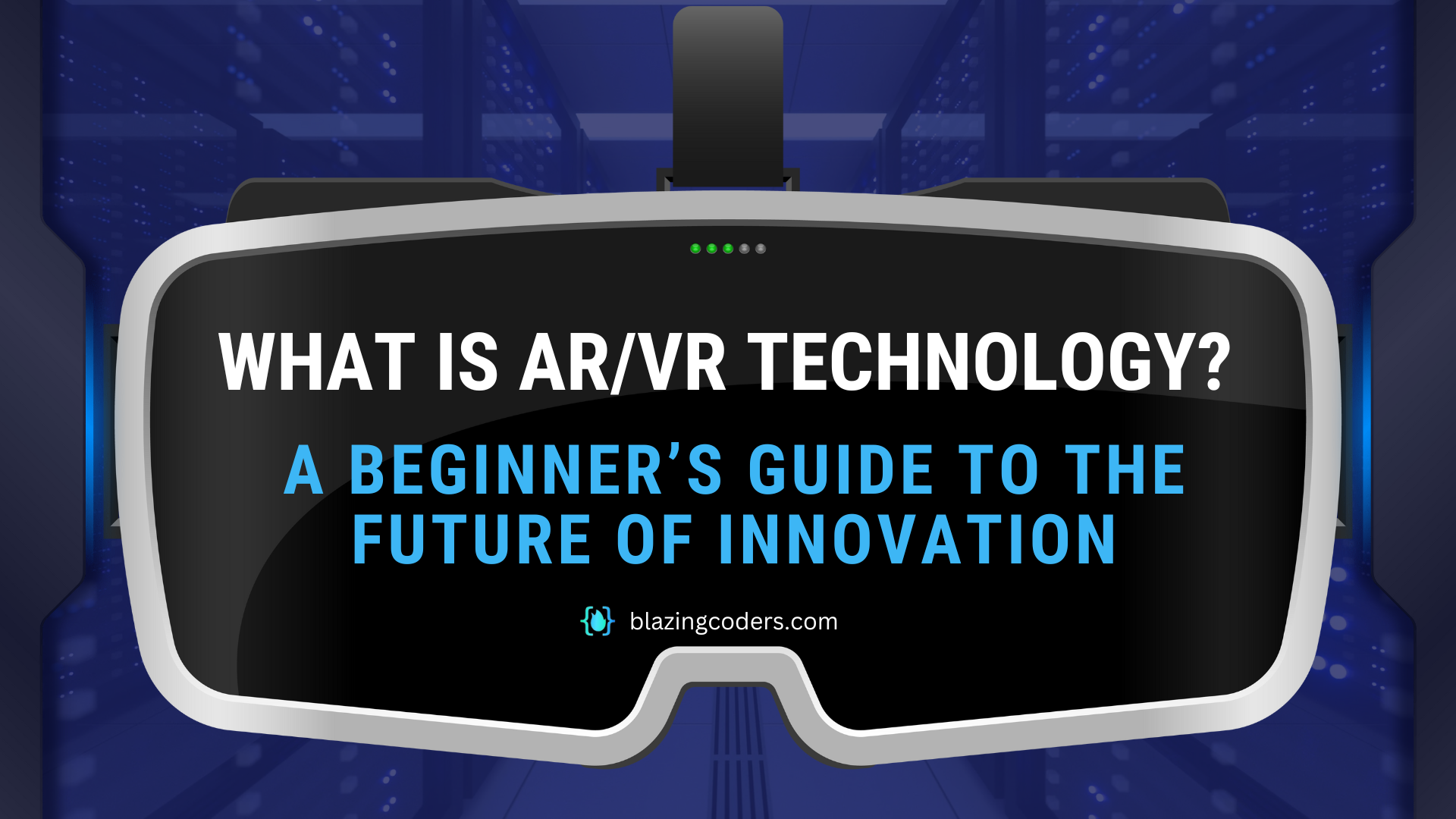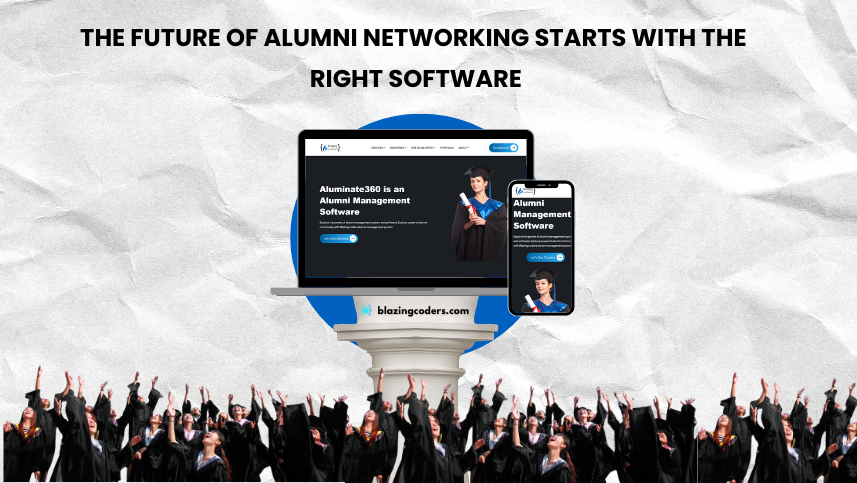What Is AR/VR Technology? A Beginner’s Guide to the Future of Innovation
The fields of virtual reality (VR) and augmented reality (AR) are no longer limited to science fiction films; they are actively influencing industries, improving user experiences, and spurring innovation worldwide. However, what are AR and VR, and why are they being hailed as the technological future? With real examples, insights into current trends, and a glimpse into the revolutionary possibilities of AR and VR, this beginner's book delves deeply into the intriguing world of these technologies.
Partner with experts in AR VR app development services to bring your ideas to life and deliver captivating experiences to your users. Whether you're creating training simulations or immersive marketing campaigns, AR/VR technology offers endless possibilities.
Understanding AR and VR
Augmented Reality (AR) superimposes digital components on the physical world. Consider it as using computer-generated inputs, like as sounds, visuals, or haptic feedback, to improve your perspective of the physical world. Pokémon GO, a mobile game that allows users to view and interact with virtual animals in real-world settings via their smartphone screens, is a perfect example.
Virtual Reality (VR), However, it immerses users in an entirely digital world. Users can explore virtual worlds, interact with 3D settings, and experience simulations that feel remarkably genuine with VR headgear like Sony's PlayStation VR or Oculus Quest 2.
Despite their differences, both technologies aim to provide immersive experiences that make it difficult to distinguish between the actual world and the digital one.
AR/VR in Action: Live Examples
-
Retail: Before making a purchase, buyers may see furniture in their homes using IKEA's augmented reality app. This "try before you buy" idea increases customer happiness and decreases hesitancy.
-
Healthcare: Surgeons can hone their abilities in a risk-free setting by practicing intricate procedures using virtual reality simulations. AR overlays vital information on a patient's body to help in real-time during procedures.
-
Gaming: By providing completely immersive gameplay experiences in virtual reality settings, games like Beat Sabre and Half-Life: Alyx are redefining entertainment.
-
Education: By allowing students to go on virtual field trips, such as touring the Great Barrier Reef or ancient Egypt, tools like Google Expeditions make learning dynamic and interesting.
Current Trends and Insights
1. The Rise of Mixed Reality (MR)
Mixed reality, which blends aspects of virtual reality and augmented reality, is becoming more popular. In fields like engineering and architecture, devices like Microsoft's HoloLens 2 are being used to produce interactive 3D models of projects in real-world environments.
2. The Metaverse
The metaverse, a communal online environment where people may communicate, collaborate, and have fun, has gained attention because Facebook changed its name to Meta. This vision is based on AR and VR technologies, which have the potential to revolutionize social and professional relationships.
3. Affordability and Accessibility
AR/VR gadgets are becoming more accessible to the general public as hardware prices decline. VR experiences are now available with only a smartphone thanks to innovations like Google Cardboard.
4. AI Integration
By facilitating more intelligent interactions, artificial intelligence improves AR/VR experiences. For example, AI-powered virtual reality avatars can mimic actual human behaviors, enhancing the naturalness of virtual social interactions.
Challenges and Limitations
Despite its promise, AR/VR technology faces several hurdles:
-
High Initial Costs: Although costs are declining, many users still find high-end equipment to be prohibitively expensive.
-
Technical Restrictions: Problems like as motion sickness in virtual reality and a restricted range of vision in augmented reality headsets must be resolved.
-
Content Creation: Creating AR/VR content takes a lot of resources, including knowledgeable developers and cutting-edge equipment.
-
Privacy Issues: User security and privacy are called into issue when AR/VR is integrated with personal data.
Future Potential
1. AR in Everyday Life
Imagine getting navigation directions right in front of your eyes or real-time translations while traveling overseas using AR glasses. AR glasses that promise to make these scenarios a reality are already being developed by companies like Apple and Google.
2. Revolutionizing Remote Work
With the use of virtual whiteboards and meeting rooms, virtual reality (VR) can establish virtual offices where distant teams can work together in a common area. This idea is being pioneered by businesses such as Spatial.
3. Enhanced Customer Experiences
Retailers might utilize augmented reality (AR) to provide individualized shopping experiences, including virtual clothing try-ons or real-time product customization.
4. Next-Level Entertainment
Anticipate previously unthinkable hyper-immersion experiences in theme parks, concerts, and movies as AR/VR technology advances.
Getting Started with AR/VR
Starting small can be entertaining and educational for people who are new to AR/VR.
Benefits of AR/VR development company
Transform your business with cutting-edge solutions from a leading AR VR App Development Company. Augmented Reality (AR) and Virtual Reality (VR) technologies revolutionize user engagement, offering immersive experiences for industries like gaming, education, healthcare, real estate, and retail.
By partnering with an AR VR App Development Company, you gain:
- Enhanced customer interaction through immersive applications.
- Scalable solutions tailored to your industry needs.
- Cost-effective training and simulation tools for your workforce.
- Increased brand visibility with innovative marketing strategies.
- Seamless integration with existing systems for optimal performance.
Empower your business with creative AR/VR solutions that drive innovation and growth. Let our experts build engaging, next-gen AR/VR applications that set your brand apart.
Here are a few possibilities suitable for beginners:
-
AR applications: Try out augmented reality with apps like Google Lens or Pokémon GO.
-
VR Experiences: Try free VR apps or games and purchase reasonably priced VR headsets like the Oculus Quest 2.
-
Study and Try: Beginner instructions for making AR/VR content are available on platforms such as Unity and Unreal Engine.
Conclusion
Virtual reality and augmented reality are more than just technologies; they offer doors to new opportunities. Their influence is extensive and profound, ranging from transforming entire sectors to improving individual experiences. The future will undoubtedly be more inventive, immersive, and interactive as these technologies are incorporated into our everyday lives.






